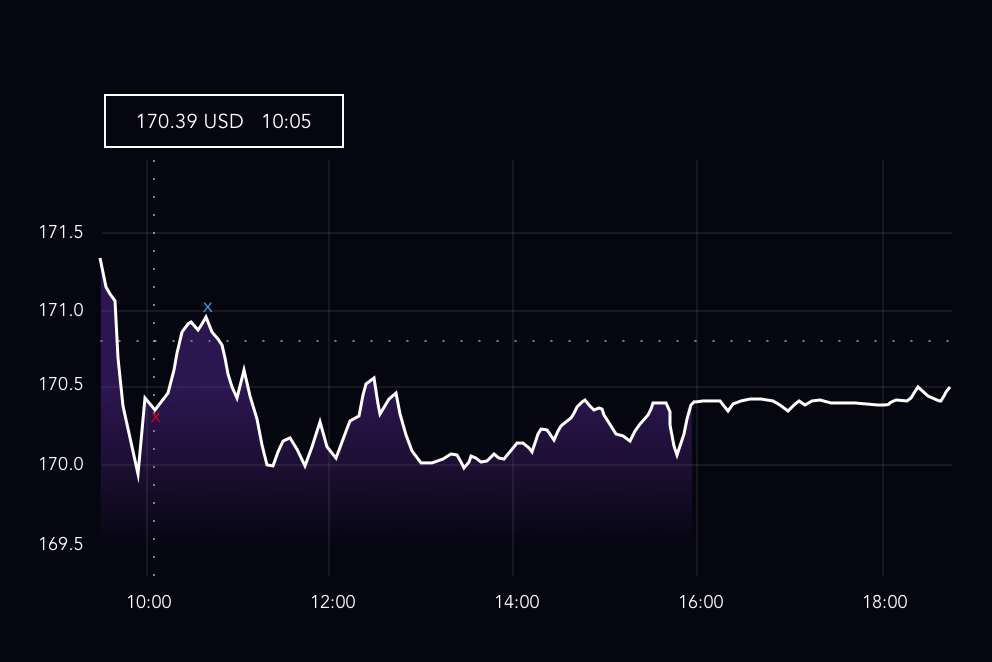Technical analysis is strategic
Technical analysis is an important part of trading. It can help traders identify possible future movements based on previous price trends. In 2069, technical analysis has become so advanced that algorithms can highlight opportunities to a trader automatically, and trading strategies can be recommended based on the analysis that these algorithms have carried out.
Find multiple opportunities at once
The big problem with the current form of algorithmic trading is that it requires constant monitoring and backtesting to ensure that the algorithms are working correctly. In 2069, trading algorithms are predictive and can automatically find a range of opportunities, each with a different probability of success.
The algorithms can assess similar markets by using a range of technical indicators – for example, comparing cryptocurrencies based on historic volatility. They can then suggest the most viable trades based on factors such as potential profitability and drawdown. New strategic technical indicators can also recommend a trading style based on a trader’s preferred risk-reward ratio and by analysing big data.
Algorithms suggest the strategy
In the price chart below, an algorithm has suggested a combined scalping and day trading strategy, mapping out potential pullbacks and retracements for a tech company’s stock for just one trading day.

The red crosses are when the algorithm recommends a trader buys and the blue are when it recommends a trader sells. The green line represents the asset’s previous and current price movements, while the grey line represents the prediction for the remainder of the session.
A trader need only click the ‘execute strategy’ button in the bottom right of the chart and the algorithm will automatically carry out the suggestions. It will do this while also implementing stops and limits to all positions that it fills in this particular strategy to minimise losses and maximise profits.
AI adjusts to changing market conditions
After the trade is placed, the algorithm will continue to react to market movements. If an asset’s price is moving toward the level of a limit order, and the algorithm can see through strategic technical analysis that its price is likely to increase further, it can suggest removing the limit and placing it at a higher level to further increase the profit potential of that position.
In the below price chart for instance, the red cross represents the old limit order, and the blue cross represents the new limit order.

If the algorithm predicts that an asset’s price is likely to rise over night or over the course of a few days or weeks – outside the confines of its initial assumptions – it can suggest alterations to the trading strategy on the fly, such as leaving the position open in order to garner the maximum profit or closing it to minimise risk.
Traders use algorithms to find opportunities
Traders can also feed an algorithm some parameters such as price, industry and profit potential over a fixed time frame, and the algorithm will then search for opportunities that match the criteria. For instance, the algorithm could find a pharmaceutical company with a price of $40 a share and the potential to realise $60 a share in six months.
Traders can decide whether to open or close a position based on the algorithm’s findings, and can even incorporate a suggested trading strategy.
Fundamental analysis is seamlessly integrated
The sophistication of artificial intelligence (AI) and automatic trading systems has also enabled traders to combine technical and fundamental analysis. The quantum computers that traders use look at every facet of information about a company instantly, and can therefore assess whether it would be a wise move to open a position based on company reports and projected earnings as well as previous price movements in that company’s stocks.
The AI trading software available can also assess whether to use fundamental or technical analysis separately rather than in conjunction with one another. Such an instance might arise for a new company that AI algorithms recognise as having a large upside potential based on company reports, but with little technical evidence to support the perceived growth.
Could this really happen?
With time travel known to disrupt the space-time continuum, our experts take a look at how likely it is that these events will come to pass…
The view from 2019
Algorithms are already being used to trade in 2019, but they are nowhere near the hypothetical sophistication proposed in this article. That being said, trading platforms like L2 dealer and MetaTrader 4 have a high capacity for algorithmic and automated trading, which is one of the key draws of both of these platforms. The current popularity of these automated trading systems suggests that they are likely to be developed further in the coming decades.
As for the development of AI systems, tech giants like Alphabet Inc, Facebook and Microsoft have applied AI systems to speech analysis, internet searches, pattern recognition, and image classification. This has led them to amass huge data sets that are already being used to analyse consumer behaviour, and it is very possible that this information could be used to make predictions about market movements in the future.
Other companies like the Swiss investment bank UBS have announced pilot programmes to use Amazon’s Alexa as an advisory chatbot, which is able to give information about economic and financial issues. Equally, Fidelity Investments have developed an addon for Alexa which can give market updates on the Dow and NASDAQ.
With all this taken into account it is plausible that, in 2069, AI and algorithmic trading systems will be sufficiently advanced to be able to carry out both technical and fundamental analysis, as well as to recommend positions and trading strategies to traders based on this information.


